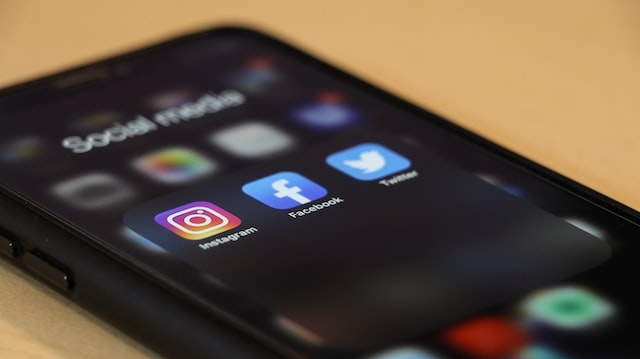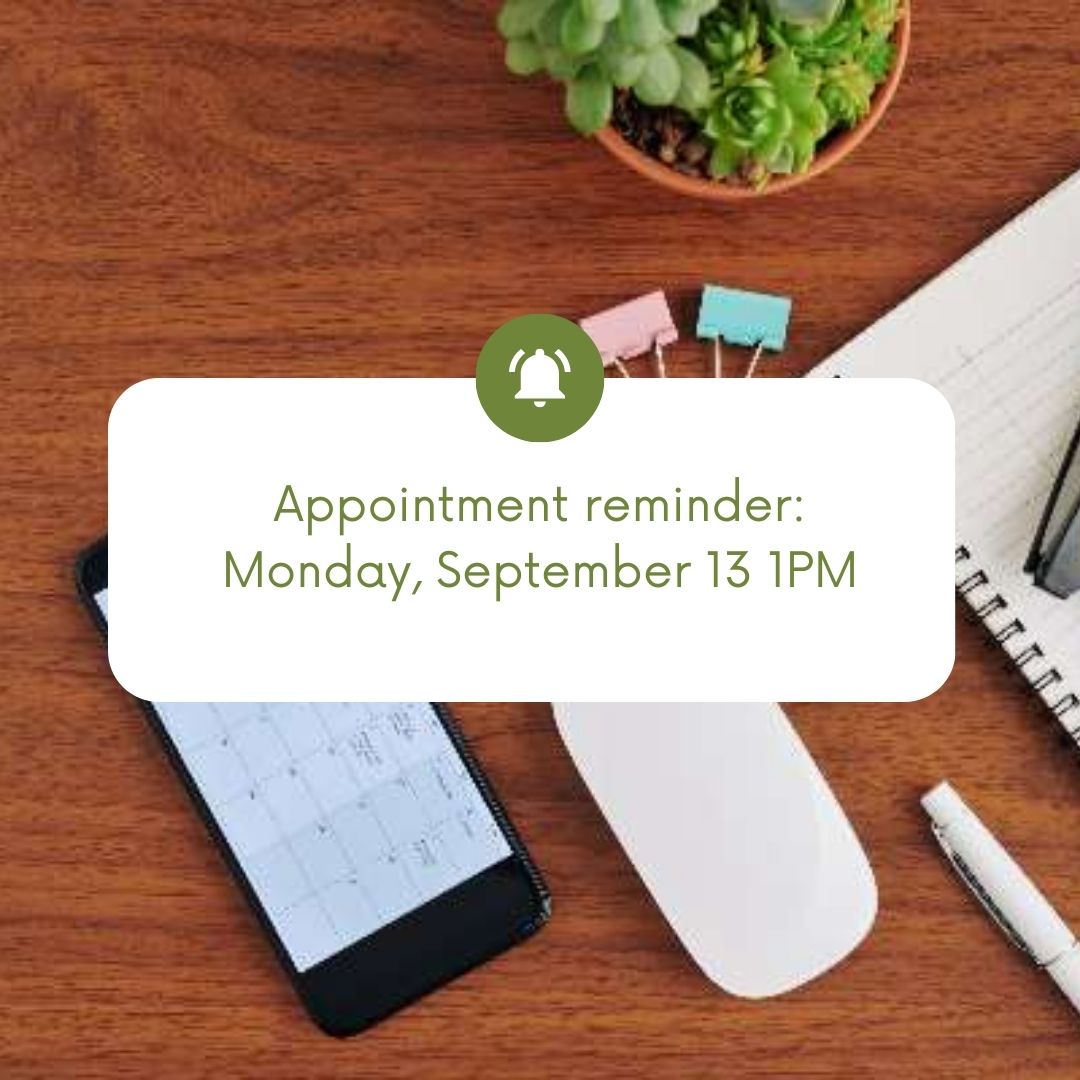
How to Effectively Reduce No-Shows For Your Classes
Picture this scenario: you’ve meticulously planned an exciting business seminar, a workshop, or an invigorating yoga class. The classroom is ready, everything is prepared, and the enthusiastic instructors eagerly await for the participants to come.
Yet, as class time approaches, you find yourself faced with the bane of class-based businesses: no-shows! Some participants who have booked the class simply fail to turn up without any prior notice, leaving empty spots and disrupting the quality of the class you’ve carefully designed.
For businesses that offer classes: yoga studios, fitness centers, learning centers, dance academies, educational institutions, and so on, no-shows can pose a significant challenge. The unexpected absences can impact your business’s bottom line, disrupt your instructors’ (and staff’s) morale, and hurt your class environment.
So, how can we manage, or even better, reduce these no-shows?

In this guide, we will delve into a variety of strategies to help you reduce no-shows. By emphasizing clear communication, implementing smart policies, and making it easy for people to reschedule, you’ll be more well-equipped to reduce no-shows and elevate your business to new heights of success.
Without further ado, let’s embark on this journey where no-shows become a thing of the past for your business!
How No-Shows Impact Your Business
For businesses offering services in the form of classes, no-shows can have a significant impact in financial, logistical, and even emotional ways:
Financial implications of no-shows
It’s quite obvious that no-shows can have a direct impact on your business’s revenue and profitability:
- Lost revenue: when registered students or participants fail to show up in a class, there are empty spots that could otherwise be filled by others. This will result in missed opportunities to generate income.
- Overhead costs: fixed costs associated with running your classes, like rent, utilities, and other costs, remain unchanged even when you have a lower attendance due to these no-shows. This means you’ll have a lower profit margin.

- Wasted resources: when you’ve prepared a class, you’ve invested the resources and effort put into setting up the classroom/environment, organizing class materials, paying your instructors, and so on. Thus, when participants don’t show up, these resources go to waste.
Logistical implications of no-shows
No-shows won’t only affect your financials but can also create logistical and operational challenges, for example:
- Disruptions of class flow: unexpected participant absences can disrupt the class’s structure and flow, which may negatively affect the experience of other attendees. This can create additional challenges for instructors in delivering a cohesive and engaging class section.
- Demoralizing instructors: repeated no-shows can hurt your instructors’ morale. They’ve put in their effort, resources, and time to prepare for each class, and no-shows can cause demotivation and even frustration.
- Wasted time: you may spend time waiting for participants who never arrive, which may lead to inefficient use of valuable instructors’ and staff time.
Emotional implications of no-shows
No-shows can have broader implications on the class’s experience and may affect the emotions of the instructors, staff, and other participants:
- Lower class engagement: a poorly attended class may result in a lower engagement, motivation, and energy level from participants who did show up.
- Negative impact on group dynamics: a missing participant can hurt class interactions and group dynamics. This can affect the overall class ambiance and quality for everyone involved.
- Dissatisfied participants: under-filled classes may cause dissatisfaction among class participants. There may also be those who face difficulties securing a spot in your class, only to find there are those who don’t show up.
As you can see, the impacts of no-shows can be significant, emphasizing the importance of tackling and reducing no-shows effectively. The good news is, reducing no show rate is definitely possible with the right approach and strategy.
Why No-Shows Happen
To effectively tackle and reduce no-shows, it’s important to understand why they happen in the first place. Identifying these root causes can allow you to tailor your strategies to address each reason directly.
Here, we’ll explore the common reasons why participants don’t show up to classes:
- Timing and scheduling conflicts
A common reason for people failing to attend classes is when they have a conflict with another commitment. They might have busy schedules, be it work, school, or other classes, so it’s challenging for them to find a suitable time for your class.

A rigid and inflexible class schedule may contribute to this, as it will be more difficult to accommodate the varying needs of your participants, resulting in missed opportunities.
- Lack of reminders or communication
People may no-show for classes simply because they forget about it.
With people’s busy lives, they can easily forget about their class bookings, so it’s important for the business (or instructor) to stay proactive and send proper reminders. Also, a common scenario is for participants being not aware of last-minute changes to class schedules due to inadequate communication, leading to no-shows and confusion.
Consider:
- Making sure your communication with students is clear and concise
- Using adequate solution to be able to send automated reminders before classes
- Use different communication channels frequently used by your class participants (i.e., email, text, social media, in-app notifications, etc.) so you can ensure participants can always receive timely reminders and updates about their classes

- Lack of engagement or motivation
Participants may no-show for classes when they don’t feel engaged with the class or when they feel not motivated enough to attend.
You should clearly communicate the course’s value or benefits to participants, which may motivate them to show up to the classes. Also, consider updating your class’s content regularly and adding more variety.
- Unclear cancellation and rescheduling policies
In many cases, people who need to reschedule or cancel their class appointment are initially willing to notify the instructor, but they end up hesitating due to unclear or too restrictive policies.
For example, participants may avoid canceling because they fear losing the prepaid fees or needing to pay additional charges. Cumbersome or time-consuming cancellation or rescheduling process may also discourage participants from taking the necessary actions, ending in a no-show.
It’s critical to have clear policies in place and effectively communicate these policies to the participants/students.

While there can be many other reasons why participants are no-shows for classes, these four are the most common ones that should be addressed first. Understanding the underlying causes of no-shows can be a great first step in reducing no-shows and improving the overall experience of your classes.
Effective Strategies to Reduce Class No-Shows
As we can see, no-shows can be a costly problem for any business offering classes, but there are a number of effective strategies we can use to reduce them.
In this section, we will discuss these game-changing strategies to elevate your business to new heights of success.
1. Building engagement and connection
Participants are less likely to cancel their appointments without notice when they feel the class is valuable—and on the other hand, they also feel valued— so they are motivated to attend regularly.
Building strong connections with participants is key to reducing no-shows, which will also help to ensure that participants are getting the most out of their experience.

Let’s explore some effective tactics you can use to build lasting connections and enhance engagement with your class participants:
Creating an inclusive and welcoming class environment
A very important foundation in building engagement is to create a class environment that is welcoming to everyone. Make sure all students feel accepted, respected, and comfortable, regardless of their background or skill/experience level.

Here are some tips:
- Begin each class with a warm and genuine greeting. This alone can be effective in making participants feel welcomed and appreciated from the moment they walk in.
- Take the time to know and remember your participants personally. Learn their names, personal preferences, and goals. Try to deliver a personalized experience to everyone.
- Encourage open communication, let them ask questions, and make sure instructors and staff/managers are approachable. Your goal is to make participants comfortable sharing their concerns and thoughts.
- Use inclusive language in your communication, and do not make any assumptions about any participants’ backgrounds or abilities. Avoid stereotypes.
- Be respectful of different learning styles, and encourage students to express them.
- Showcase diversity and inclusivity in your class materials and in promoting your business, so you can attract participants from different backgrounds.
Encourage participation and interaction during classes
Encouraging participation and interaction during classes can also be effective in building engagement. This can be done by:
- Asking open-ended questions that require students to think and respond. Offer praise and positive reinforcement to those who shared their response to boost motivation.
- Include team-building activities in classes to encourage interaction among participants and break down barriers.
- Incorporate group activities and partner exercises to provide opportunities to work together. This can create a sense of camaraderie among participants.
- Occasionally involve participants in class decisions, for example, by asking for their input on activities or topics.
Gathering feedback and actively addressing concerns
Last but not least, it’s important to gather feedback from participants so you can address any concerns they may have.
- Regularly send out feedback surveys (i.e., you can use online tools like SurveyMonkey or Google Forms.) Make sure to use their feedback to improve your class experience.

- Actively listen to participants’ feedback, questions, and concerns during class.
- Schedule one-on-one check-ins with each participant to discuss their progress, goals, and challenges they are facing.
- Promptly respond to concerns or queries, whether in-person or through email/phone. Make sure they feel valued and that you are listening to their input.
2. Flexible Cancellation and Rescheduling Policies
We have mentioned that rigid and too strict cancellation/rescheduling policies tend to be a common cause of no-shows.
Thus, to reduce no-shows, being flexible in your policies to accommodate the needs of your participants is key. Try to demonstrate empathy towards your customers’ situations, but don’t neglect to safeguard your business interests.
Consider:
Allowing easy cancellations and rescheduling
- Grace period: a grace period is a specific time frame during which participants can reschedule or cancel their appointments without restrictions or penalties. Try to find the sweet spot in which the grace period is long enough for your students but not so long that it encourages them to cancel/reschedule at the last minute.
- User-friendly and streamlined process: make it as easy as possible for participants to cancel or reschedule their class bookings with clearly communicated steps.
- Automated confirmation: set up an automated system that automatically sends confirmation to participants when they successfully reschedule or cancel a class.
Handling exceptions with understanding and empathy
There will be participants that need to cancel or reschedule their appointments at the last minute for valid reasons. In these cases, you should give exceptions to the rule and handle the situation with empathy. It’s best to offer exceptions to your cancellation policy on a case-by-case basis.

For these participants who request cancellations or rescheduling due to exceptional circumstances, try to engage in personalized communication if possible, which may leave a lasting impression and improve loyalty. You may also want to offer them credit/vouchers for future classes so they can attend a similar session later.
Yet, it’s important to clearly communicate your exceptions policy. In what circumstances can they request special consideration? This is important to avoid confusion and policy abuse.
3. Clear and Concise Communication
Another important backbone in reducing no-shows is to ensure clear and effective communication.
Consider the following:
Provide details class information and expectations
When communicating information with students, it’s important to be as concise and clear as possible, especially for the following:
- Class descriptions: craft well-written and detailed class descriptions that clearly communicate the content, objectives, and prerequisites (if any) of the class. This helps manage the participant’s expectations.
- Level of difficulty: clearly communicate the experience required for your classes so participants can choose classes that align well with their current skills, experience, and interests.
- Class policies: communicate any policies you may have (refund, cancellation, rescheduling, etc.)
- Venue: for in-person/physical classes, provide clear directions to the venue and inform participants about available facilities (parking, equipment, changing rooms, accessibility options, etc.)
Sending reminders
Sending reminders to class participants about upcoming classes alone can be an effective way to reduce no-shows.
If you have an appointment scheduling solution like Bookeo, typically, it will provide you with the ability to send automated reminders via email or SMS, so make sure to leverage this.

Consider the following tips:
- In general, send reminders at least 24 hours before the class
- Try to cater to each participant’s preferences if possible. Some may prefer multiple reminders leading up to the class, while others prefer only one reminder a day before the session
- If there are any last-minute changes (i.e., class rescheduling, suddenly unavailable instructors, etc.,) make sure to communicate this information through the reminders
Offer incentives and rewards
Another effective way to reduce no-shows is to offer incentives and rewards to class participants/students.
For example:
- Offer incentives for regular attendees, such as exclusive access to special classes or discounts on their next classes.
- Reward class participants who refer new students to your classes
- Implement and communicate a loyalty point system, where class participants can earn points when they attend classes. The loyalty point can be redeemed for rewards or discounts when it has accumulated
- Offer early bird or time-limited discounts to motivate participants to register and attend by creating a sense of FOMO
- Acknowledge participants’ achievements and improvements in classes in front of other students to boost motivation
By following these tips and adopting these communication strategies, you can create a more informed and engaged customer base. The improved engagement has been proven not only to reduce no-shows but also to cultivate loyalty and improve retention.
Data Analysis and Continuous Improvement
In your pursuit of reducing no-shows and improving your business’s success, data analysis plays a critical role. In addition to the tips and strategies discussed above, tracking attendance, analyzing trends, and making data-driven decisions can help you gain valuable insights that lead to continuous improvement in reducing no-shows.

In this section, we will explore the key steps to leverage data for optimizing your class management:
1. Tracking attendance and no-show rates
The most important foundation in your data analysis is to track class attendance and no-show rates.
This can be done manually with a spreadsheet or with the help of a booking software that tracks attendance like Bookeo.
Consider:
- Maintain comprehensive records of attendance for each class that takes both participants and no-shows into account.
- Track instances of no-shows in detail and categorize them by class type, time, day, or other relevant factors.
- Calculate attendance ratios for different sessions. Try to identify patterns and unique discrepancies.
2. Analyzing trends and patterns
Once you have properly tracked attendance and no-show rates, the next step is to analyze the collected data.

You can look for trends and patterns in different categories:
-
- Seasonal variations: observe any seasonal trends and variations in class attendance. Use the data to anticipate seasonal dips and peaks in demand.
- Class types: which classes have the highest attendance and no-show rates? Try the investigate the reasons behind their popularity or high no-show rates.
- Time slots: analyze different attendance rates on different time slots. This can help you determine optimal class timings with the lowest no-show rates.
- Demographics: analyze attendance data by demographics (i.e., age groups, locations, etc.) so you can prioritize your marketing resources more effectively.
3. Making data-driven decisions for improvements
By analyzing data, you should be able to identify common reasons and root causes behind no-shows. Now you can start to make data-driven decisions and develop strategies to address no-shows, including:
- Adjusting class offerings: use attendance data to refine your class offerings. Prioritize classes with higher attendance rates, and make adjustments or eliminate underperforming sessions.

- Optimizing class schedule: optimize your class schedule based on attendance patterns so you can better align with your participants’ preferences.
- Targeted marketing: leverage insights from demographic data to tailor marketing campaigns. Prioritize targeting your ideal audience with the lowest no-show rates.
Data analysis enables you to take a proactive impact in reducing no-shows and improving your classes’ quality.
When making these improvements, it’s best to apply these data-driven optimizations gradually. Allow sufficient time so you can assess their impact objectively before making further adjustments.
Wrapping Up
No-shows can be a costly and challenging problem for any business offering classes and lessons. Yet, as we’ve discussed in this article, there are a range of powerful strategies that —when implemented correctly—will have a profound impact in reducing no-shows.
These strategies include:
- Identifying root causes: knowing and directly addressing the root causes of no-shows, such as motivation issues, timing conflicts, difficult cancellation/rescheduling methods, and more.
- Setting clear expectations: it’s highly important to set clear expectations with no-shows and cancellations. Students should clearly understand what the cancellation policy is and the consequences for no-shows
- Automated reminders: automated reminders before classes have been shown to be effective in reducing no-shows. You can send reminders via email, text message, in-app, or social media.
- Flexible cancellation policy: implement flexible cancellation/rescheduling policies with a grace period. Handle exceptions with empathy and understanding.
- Data-driven improvements: leverage data analysis to track no-show rates, identify trends, and make informed decisions for continuous improvements.
Bookeo can be your business’s powerful ally in reducing no-shows by streamlining your class management process. With Bookeo’s user-friendly features, you can send automated reminders, set up and communicate flexible cancellation/rescheduling policies, and leverage its powerful reporting analytics.
Taking proactive steps to address no-shows is an important investment to ensure your class-based business’s success. Remember that reducing no-shows is not only about maximizing revenue but also about creating an engaging class environment where students are motivated and inspired.
By implementing these strategies we’ve discussed, you’ll unlock new possibilities and opportunities for your business to grow like never before.

